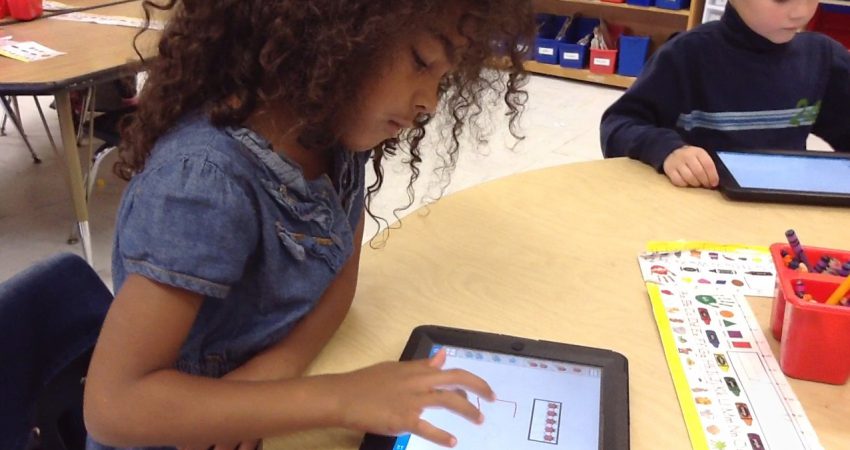
By Lisa Sindorf - June 2013
PAPER CITATION
Xu, J., Coats, L., & Davidson, M. (2012). Promoting student interest in science: The perspectives of exemplary African American teachers. American Educational Research Journal, 49(1), 124–154.
Research Design
Because in-school learning practices have tended to exclude or alienate students of color from STEM learning, educators and researchers need to understand how culturally relevant learning practices can engage these students. This study investigated what exemplary African American science teachers do to develop interest in science among low-income African American elementary students. The researchers found three interrelated approaches:
The researchers argue that the three approaches combine and overlap to promote students’ interest in science.
The study drew on case studies of eight African American teachers who were identified as exemplary based on criteria such as National Board certification, staff or student nomination, or student achievement on state and national assessments. The teachers taught at schools that predominantly served lower-income African American students. Researchers analyzed a variety of data including open-ended interviews, focus groups, classroom observations, lesson plans, and student work.
The findings suggest that teachers play a critical role in fostering students’ interest in science. In particular, the approaches used by the African American teachers in this study demonstrate the role of culturally relevant connections in promoting science interest in low-income African American students.
The teachers in this study described three approaches. 1) Having a genuine interest—in science, in teaching, and in students’ lives 2) Scaffolding students’ interest in science 3) Offering multiple standpoints—many ways for students to engage
1) Having a genuine interest The teachers expressed passion for science and modeled that passion for their students. They were also enthusiastic about teaching science and sharing their passion with others. This genuine interest extended to the students themselves: The teachers were invested in students’ lives, interests, and ideas. For example, one teacher described visiting her students’ communities; another asked students how she could make class more interesting. Many of the teachers expressed deep feelings of care for their students; they noticed and empathized when students were upset.
2) Scaffolding students’ interest in science The teachers used several approaches to support students as they learned science. For example, they built on their personal connections with students to connect science to students’ daily lives, including suggesting how science might help them or someone they knew. Another support the teachers used when exposing students to new information, vocabulary, and experiences was to link these new experiences to students’ prior knowledge. Many teachers also used differentiated instruction: They gave their students choices, such as what topic to investigate or what format to use when communicating their learning. Finally, the teachers described “keeping an eye on” students, continually monitoring and motivating them when they might be discouraged or disengaged.
3) Offering multiple standpoints The concept of multiple standpoints is similar to the idea of multiple learning styles or multiple access points. The teachers in this study engaged students by deliberately using a mixture of teaching strategies and a variety of activity types. For example, hands-on activities, such as building a model galaxy or assembling a skeleton, gave students autonomy and made content relevant and accessible. Technology, such as videos, animations, computer simulations, smartboards, or “quiz-show” software, could bring content to life, making it available in multiple forms. Teachers also offered and encouraged various forms of expression, especially movement and dance, rhythm and music, and group work. Finally, many teachers invited professionals from the local science community, exposing students to a diverse range of people and perspectives in the sciences.
Theoretical Underpinnings
This study offers a sociocultural perspective, which suggests that students’ out-of-school cultural practices affect their learning. Many students of color experience cultural dissonance between in-school and out-of-school learning practices. Culturally relevant teaching, a term first introduced by Gloria Ladson-Billings in the 1990s, is a movement in education that attempts to make meaningful connections between students’ home and school culture, thus bolstering engagement and interest.
Implications for Practice
In this paper, the authors describe some of the strategies exemplary African-American teachers used to create a bridge between students’ home culture and interests on the one hand and, on the other, the science content they were learning in school. The researchers argue that the teachers may have shared common cultural referents with their students. These commonalities may have helped them make connections between students’ home lives and school science practices. Although the strategies described in this paper were used in work with predominantly low-income African-American youth, deliberately making connections between home and school cultures may be effective in supporting the learning of students from other non-dominant cultures.
Practitioners who are looking for culturally responsive strategies to engage young people from non-dominant cultures, particularly African American youth, might use these three approaches to build their own students’ interest. For example, informal science education practitioners might “take a genuine interest” by building staff capacity to connect with children’s lives, either by training existing staff or by hiring staff members who have an understanding of the communities they serve. Then staff members can apply this understanding to make connections between students’ lives and program science content. Further, the content could be offered in a variety of forms, and activities could be structured to include choices about what and how to learn. Providing these choices would, in turn, continue to build an atmosphere of authentic caring—both about the students themselves and about their science learning.
References
Ladson-Billings, G. (1992). Culturally relevant teaching: The key to making multicultural education work. In C. A. Grant (Ed.), Research and multicultural education (pp. 106–121). London, UK: Falmer.




